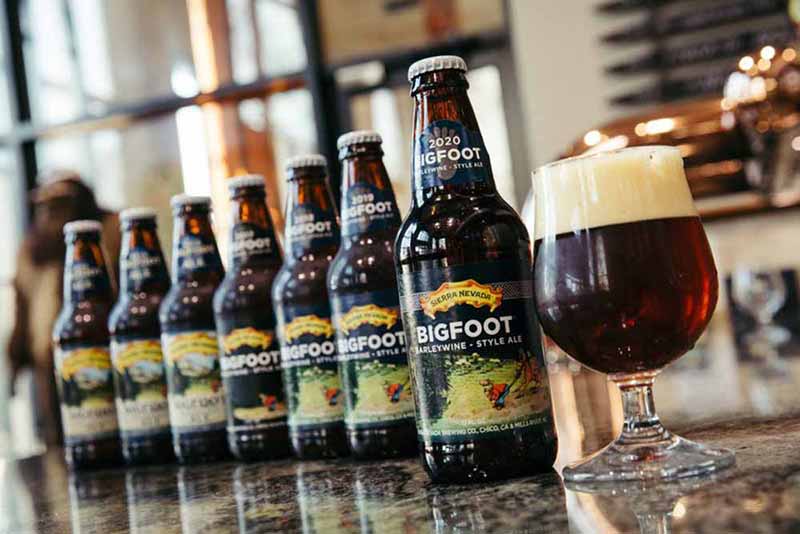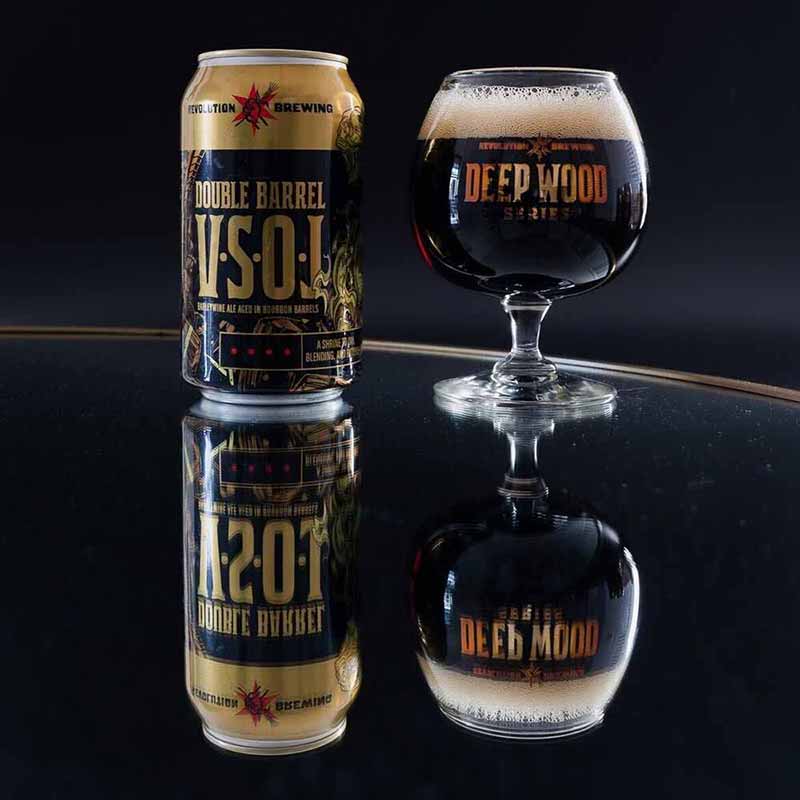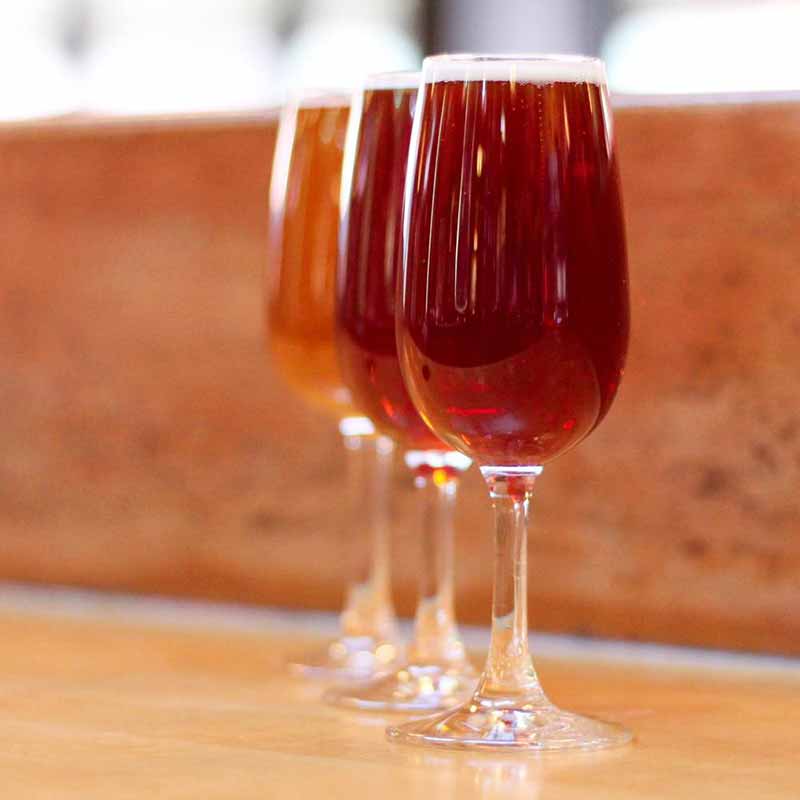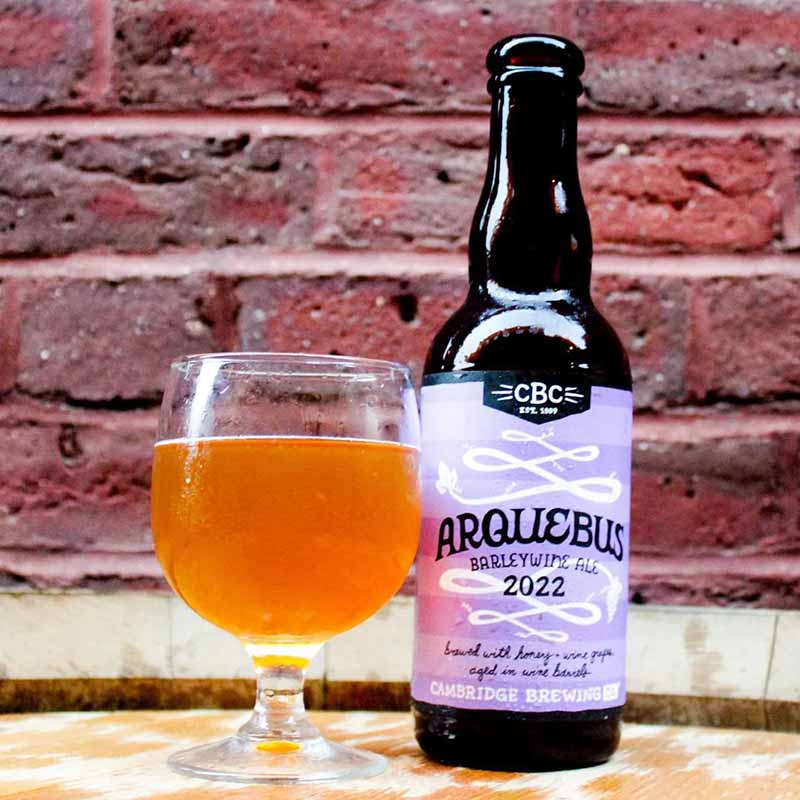
We’ve covered a lot of big beers in this space, including dessert-flavor-packed pastry stouts, imperial stouts, and even Belgian tripels.
Along the lines of the malt-forward Scotch ale that we wrote about earlier this year, barleywine is another boozy beer that has gained momentum in the industry. According to Untappd, English barleywines ranked as the second highest-rated style on the world’s largest beer social media platform in 2023. Previously referred to as old ales, barleywine is actually a descendant of those aforementioned Scotch ales.
There are several breweries throughout the country making fantastic takes on the style. We chatted with Cambridge Brewing Company (CBC) Brewmaster Will Meyers and Private Press Owner and Brewer Brad Clark, who have been knocking barleywines out of the park for quite some time, about the top considerations, some tips and tricks, and the intricacies of brewing a great barleywine.
What We’ll Cover in This Piece:
Affordable, Industry-Leading Brewery Software
How Do the Experts Define Barleywine?

Photography courtesy of Anchor Brewing Company
“Barleywines are huge, complex beers,” Meyers says. “The first thing you look for is a beautiful full glass of clear beer that presents with finesse, regardless of whether it pours with a big head.”
Meyers and CBC hold an annual barleywine festival at the brewery. He says brewers throughout the country are making the English-style, malt-forward beer true to form, but some give it an American twist with North American hops. Some of the highest-regarded beers in the industry are American barleywines—Anchor Old Foghorn® Ale, Sierra Nevada’s Bigfoot, Firestone Walker Helldorado, and Deschutes Mirror Mirror, to name a few.
Clark prefers the English-style barleywine, which focuses on high-quality English pale and caramel malts without accentuating hops as heavily as its American brethren.
“So I always lean into that caramel toffee character,” Clark says. “I want to push that raisin and sweet note from the kilning of the malts and one hot addition for bittering.”
Clark has been brewing barleywine for nearly two decades, establishing himself as a big-beer brewer at Ohio’s Jackie O’s before launching Private Press in Santa Cruz, California. He says his preference has always veered toward English barleywine, specifically barrel-aged.
Either way you slice it, barleywine is high in ABV, and Meyers says that must come through immediately.
“Regardless of how the beer presents, alcohol should be prevalent, clean, and strong,” says Meyers, who notes they brew theirs at CBC to age for a year before serving it.
He adds, “At CBC, I’m looking for an aged sherry alcohol component, high esters, tons of fruit, fresh wine grape and honey esters [in the hot months], or caramel, coffee, and marshmallow characteristics in the winter.”
Similar to the English-style barleywine, the American version is chock-full of malts that are then given a lengthy boil, though those malts will be more along the lines of pale and caramel that come from American maltsters compared to its English counterpart that features U.K.-based pale grains, getting caramelization from the long boils. The biggest change is through the use of Pacific Northwest hops—a boatload of them, resulting in a higher IBU and danker finished product.
What Are the Top Considerations for Barleywine?

Photography courtesy of Revolution Brewing Company
Clark says it starts with quality malt, specifically European malt.
“Start with Maris Otter and/or Golden Promise or a high-quality European base malt,” Clark says.
Once you get that mash done and send it to the kettle, you really need to give the boil some time.
“That could be three hours, five hours, but I like to give it a three-hour boil to get all that character cooked in there,” Clark says.
He adds, “And don’t hop it too much. Let the malt shine.”
Meyers points to the yeast as a focal point for a barleywine. He says brewers should have healthy, solid yeast culture with plenty of hungry cells in good shape.
“That will make or break your success,” Meyers says. “You can have the best wort production day in the world, but if you have an older yeast or under-pitch, you can expect something underwhelming at best.”
Are There Any Challenges You Could Run into with Barleywine?
Meyers says it can be challenging to hit the target gravity on barleywine sometimes, especially at CBC, where he says their mash tun is undersized for what grains need to go in, depending on the batch size.
“Ways around that would be to add some dried malt or liquid malt extract to achieve target gravity,” he says. “What’s more fun is to do a double mash, and if you have the opportunity and have a second vessel, to do second runnings, and you can do a small beer, too.”
Clark says there can be slow lautering sometimes, so adding rice hulls to your mash can help.

Cambridge Brewing Company Blunderbuss barleywine | Photography courtesy of Cambridge Brewing Company
“I always use those because of the sheer amount of malt I’m using,” Clark says. “Even if there’s no oats or wheat, I still throw rice hulls. I call it my insurance policy to keep a speedy lauter.”
Clark also advises not to add water to bump out more barrelage. He says doing so will lead to a subpar barleywine.
“You’re going to get a pretty low yield,” Clark says. “Commit to cast out a lot less than you normally do.”
What Is an Ideal Grist Bill for a Barleywine?
Meyers admits that they try to keep it simple with their barleywine.
“We use a high-quality base malt, a blend of Maris Otter and Golden Promise from Thomas Fawcett maltings,” he says. “And a little pale caramel malt to help facilitate nice color in the beer and the development of malty, caramel, raisiny flavors.”
Meyers says the blend of pale base malts are accompanied with additions of Gambrinus Pale malt, Briess Ashburn Mild Ale malt, or similar to the tune of eighty-five percent. He says he adds Malteries Franco-Belges Special Aromatic malt at two-and-a-half percent and crystal malts in a blend of low color and high color, about five to five-and-a-half percent, including Thomas Fawcett Pale Crystal 25*L and Thomas Fawcett Dark Crystal Malt II 120*L.
Clark says they start with an eighty percent fermentable base malt like Maris Otter, Golden Promise, or a combo of the two, with some Munich malt as well.
“Ten to twenty percent of that [base malt] can be Munich, but you can move those [numbers] around a bit,” Clark says. “Then I use ten to fifteen percent caramel malt, five percent oats, and about two percent rice hulls.”
Which Hops Work Best in Barleywine?
“I’m going with whatever high alpha is around,” says Clark, who brews at other breweries for his production. “I’m at the whim of whatever is in the cooler.”
Clark says he is looking for something around twelve percent alpha acid in the hop and throws it in with seventy-five minutes left in the boil.
“I’m shooting for twenty-five IBUs,” he says.
Meyers explains that CBC starts hopping at ninety minutes and includes additions at forty-five minutes, flameout, and in the whirlpool.
“We take a classic approach and use low alpha, mostly English-style hops, and use plenty of them,” Meyers says. “I’ve always been a big fan of East Kent Goldings and Fuggles.”
He adds, “We’re using around an eighty-twenty split of U.K. vs. U.S. hops [in our barleywine]. We use the U.K. hops at ninety and forty-five and a combo of U.K.-U.S. at flameout and whirlpool.”
Meyers says they’ve been doing the beer that way for thirty years and have stuck to the old-school regimen for timing the hop charges.
What Is the ABV Sweet Spot for Barleywine?

Photography courtesy of Jackie O’s
While Clark and Meyers both make great barleywines, they differ on the sweet spot for the beer’s ABV.
“I’m sure there are great 12% ABV barleywines, and I have good 20% ABV barleywine,” Clark says. “But part of me feels 15% ABV to 17% ABV is the sweet spot.”
Clark puts his in barrels and blends them with batches that are two years old and around six to eight months old. The ABV is where it goes organically, but taste is the key.
“Whatever components bring us the most rounded expression is what I’m gonna use,” Clark says. “It’s nice to let them go a year plus, but it’s important to stay connected to the beer, taste it, and watch it evolve.”
He adds, “There is a window where it’s good, and then the window closes, and it’s not good anymore. You need to know when that window is and when, how, and why you’re going to package it.”
Private Press starts fermentation at 32 degrees Plato, and Clark says he wants to get it down to around 10 to 12 Plato, which is about 12.5% ABV to 13% ABV at the end of primary fermentation. He says the beer gets 2% to 3% ABV from barrel aging.
Meyers says his target ABV is lower than Clark’s primary ferment ABV.
“I think 10% ABV to 12% ABV is a pretty good sweet spot,” he says. “We generally aim for 11% ABV to 12.5% ABV.”
Meyers says he is always impressed with brewers in the U.K. who can crank out 8.5% ABV barleywines and still get incredible character in the beer.
“I struggle to achieve that character in barleywine at that ABV range,” he says. “Something about that English je ne sais quoi. They can pump out these fantastic beers at lower ABVs. It’s outstanding.”
What Yeast Do Experts Use to Ferment Barleywine?
High-ABV beers need strong yeast—or at least a healthy pitch—to attenuate enough. Meyers says they typically use their house English Ale yeast but have sometimes tried different methods.
“There have been years, for whatever reason, we’ve blended in California Ale yeast to help with attenuation,” Meyers says. “It’s really good insurance. It’s important that a barleywine be well attenuated for the style, for balance.”

Photography courtesy of Goose Island Beer Co.
Meyers says CBC starts its barleywine at 27 to 28 Plato and ferments it down to 5 to 6 Plato. They knockout at 66 degrees Fahrenheit and set the ferment for 68 degrees Fahrenheit.
“Every day we go up a degree, but don’t get over 72 degrees Fahrenheit,” Meyers says. “We found that with our system, as we get higher in ABV, and our yeast is struggling, we don’t want to have the glycol jacket fighting with it, so we want to control the rise but not shock the yeast.”
He adds, “The alcohol content is going to give so much perceived sweetness anyway, so if you got a barleywine that is 12% ABV but finishes at 8 or 10 Plato, I find that to become super cloying.”
Meyers suggests shifting to more of a pastry barleywine with barrel aging and blending in those cases.
Clark says he is okay with the idea of using one hundred percent English Ale yeast because it will get significant attenuation. But fermentation, in that case, should be no higher than 64 degrees Fahrenheit, or you’ll get green apple flavors. He opts for mostly U.S. strains, occasionally adding English yeast.
“I use US-05 or SF4 U.S. strains, but I also throw in an English yeast into that as well, so it attenuates and isn’t sluggish,” Clark says. “I typically see twenty to twenty-two points of Plato each time.”
Two Examples of a Great Barleywine

Photography courtesy of Cambridge Brewing Company
Meyers says CBC has two options of barleywines but points to Blunderbuss as an excellent winter barleywine.
“It’s a very traditional, classic barleywine,” Meyers says.
Blunderbuss is 12.75% ABV, using nearly a ton of malt and five different hops while aging for several months in French Limousin oak, according to the Untappd description.
Years later, CBC embarked on making a summer barleywine that would be consumed after a meal on a humid hot night in Boston, Meyers explains.
“The inspiration came from CBC founder Phil Bannatyne,” Meyers says. “He talked about having a dinner where they finished with some dessert wine and asked, ‘Why don’t we have something like that in a beer?’”
So CBC made Arquebus, a 14% ABV barleywine perfect for an after-dinner drink.
“We used all pale malt, added honey in fermentation, racked it into oak wine barrels, and added crushed wine grapes … it’s a beer-wine hybrid,” Meyers says. “It’s a wild beer.”
Clark says he brewed his favorite barleywine while with Jackie O’s. Brick Kiln is a 13% ABV beer aged in spirit barrels.
“Brick Kiln was the beginning of this whole journey,” Clark says. “That barleywine cemented my love for the style or my love for making it.”
At Private Press, Clark says he created DeJohnette, named after Jazz pianist and keyboardist Jack DeJohnette.
“It is not a beer that has been released on its own,” Clark says. “It is a component that makes its way into the blends. DeJohnette finds its way into more blends than any other recipe/component in my stable.”



